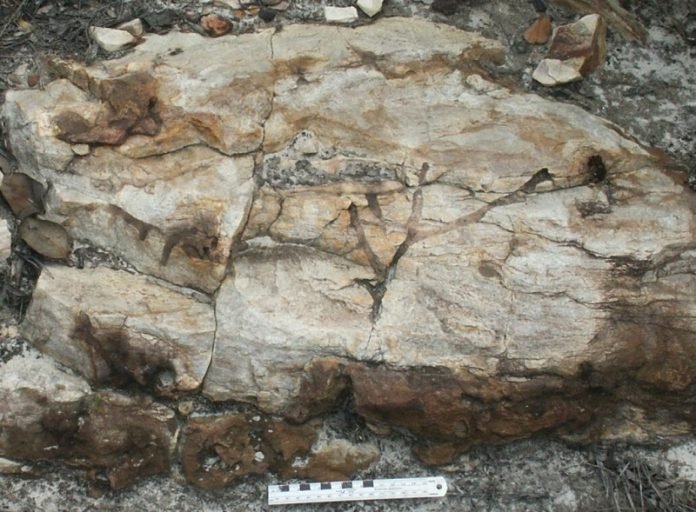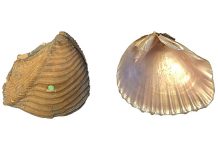
For half a century, geologists have been baffled by perforations in a piece of quartzite, a type of rock, in Western Australia. The markings are identical in shape to burrows made in sands by crustaceans.
But what confounded scientists is that the original sandy sediment is a billion years older than the oldest known animals.
Now, an international team of scientists including Bruce Runnegar, a UCLA professor emeritus of Earth, planetary and space sciences, has resolved the mystery.
The researchers used radioactive minerals to measure the age of sand in the burrows and found that the sand was more than a billion years younger than the quartzite around it — meaning that the burrows could indeed have been created by animals.
But how can animals burrow through hard quartzite? The answer was given by microscopic investigations, which showed that the grains had first separated at contact surfaces, resulting in a friable matrix, and then been fused again through later deposition of quartz, returning the rock to the state of hard quartzite.
“A similar process produced the stuff of the standing stones of Stonehenge,” Runnegar said.
A window in time had thus been opened to enable burrowing, the researchers report.
Through comparisons with surrounding sedimentary strata, the scientists could date this window to about 40 million years ago, during the Eocene epoch of Earth’s history.
“Most likely, the traces were made by crustaceans, which invaded southwestern Australia during a short-lived marine transgression associated with the opening of the Southern Ocean,” said senior author Stefan Bengtson, professor emeritus and paleontologist at the Swedish Museum of Natural History.
“These trace fossils in the ‘wrong’ rocks have been a mystery for half-a-century,” Bengtson said. “We are glad to have been able to demonstrate geological processes that resolve this conundrum.”
Written by Stuart Wolpert, UCLA Physical Sciences.



